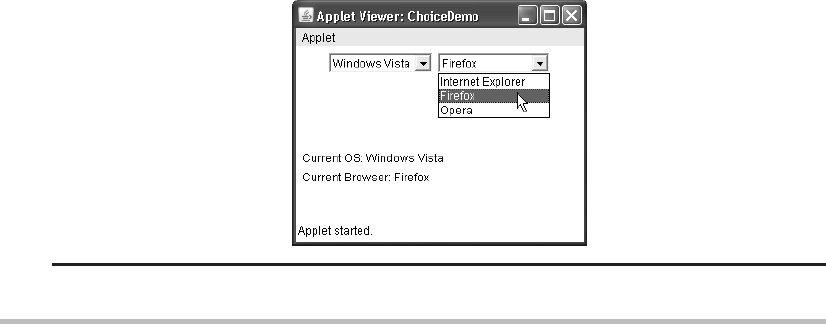FIGURE 24-4
Sample output from the ChoiceDemo applet
Using Lists
The List class provides a compact, multiple-choice, scrolling selection list. Unlike the
Choice object, which shows only the single selected item in the menu, a List object can be
constructed to show any number of choices in the visible window. It can also be created to
allow multiple selections. List provides these constructors:
List( ) throws HeadlessException
List(int numRows) throws HeadlessException
List(int numRows, boolean multipleSelect) throws HeadlessException
The first version creates a List control that allows only one item to be selected at any one
time. In the second form, the value of numRows specifies the number of entries in the list
that will always be visible (others can be scrolled into view as needed). In the third form, if
multipleSelect is true, then the user may select two or more items at a time. If it is false, then
only one item may be selected.
To add a selection to the list, call add( ). It has the following two forms:
void add(String name)
void add(String name, int index)
Here, name is the name of the item added to the list. The first form adds items to the end of
the list. The second form adds the item at the index specified by index. Indexing begins at
zero. You can specify 1 to add the item to the end of the list.
For lists that allow only single selection, you can determine which item is currently
selected by calling either getSelectedItem( ) or getSelectedIndex( ). These methods are
shown here:
String getSelectedItem( )
int getSelectedIndex( )
The getSelectedItem( ) method returns a string containing the name of the item. If more than
one item is selected, or if no selection has yet been made, null is returned. getSelectedIndex( )
Search WWH :


